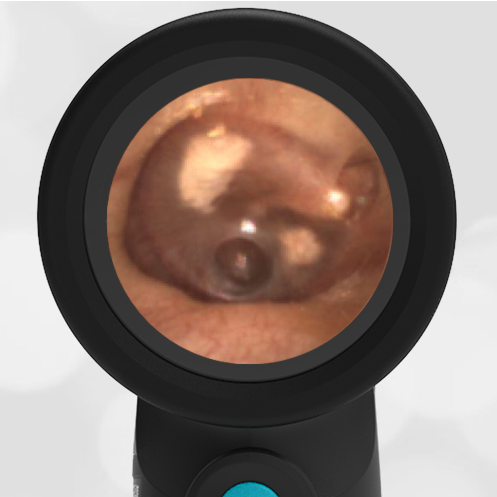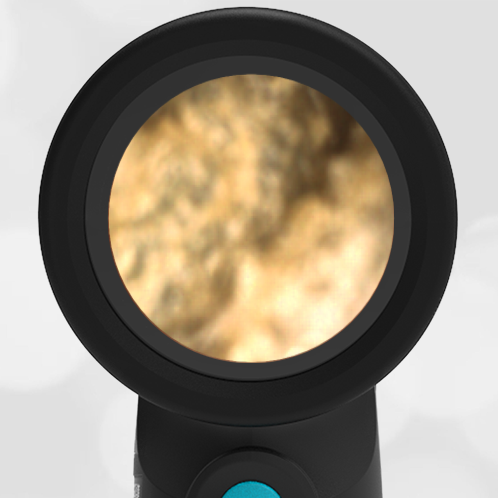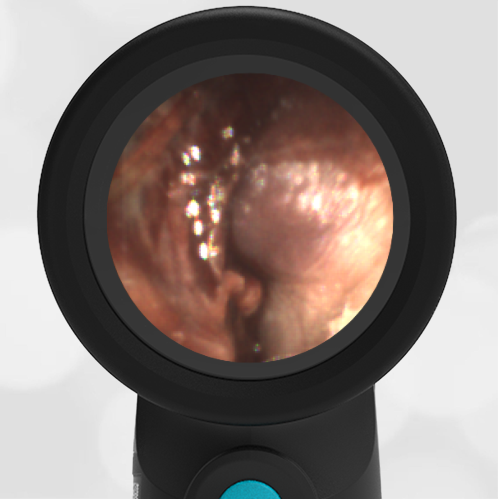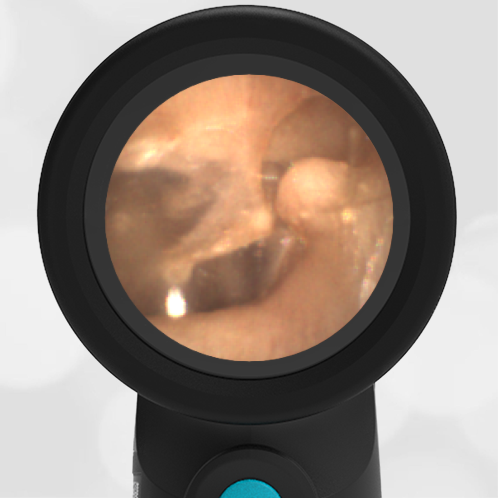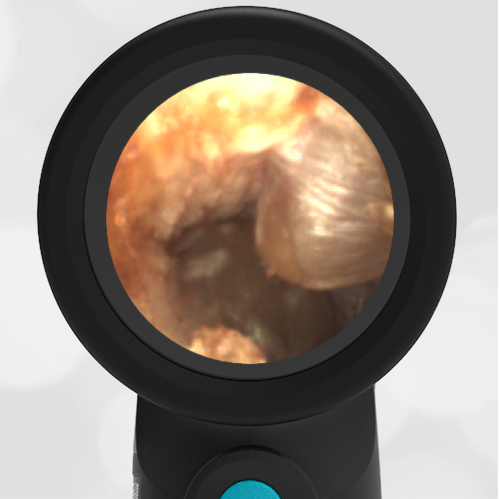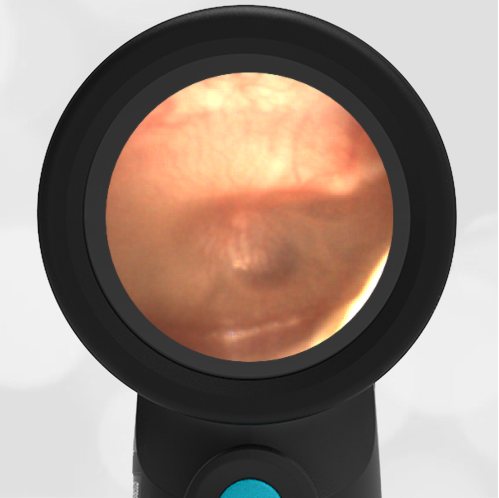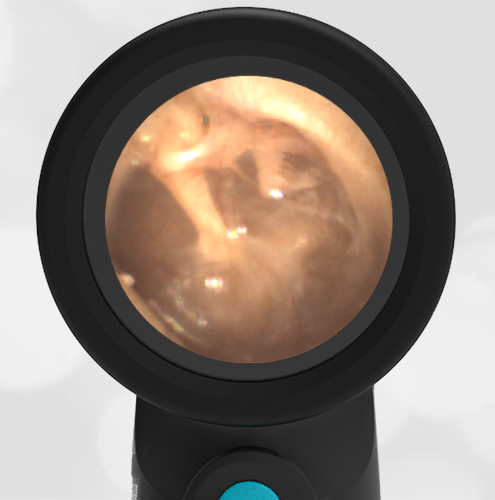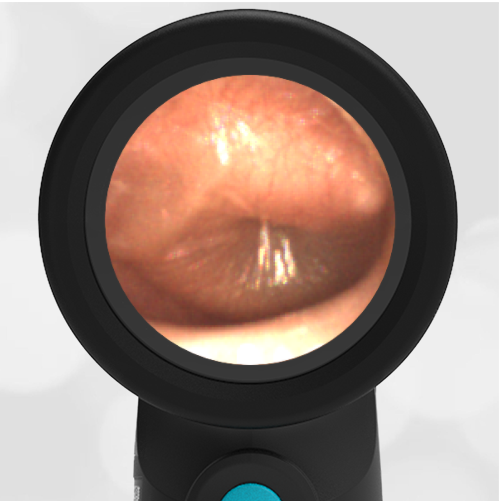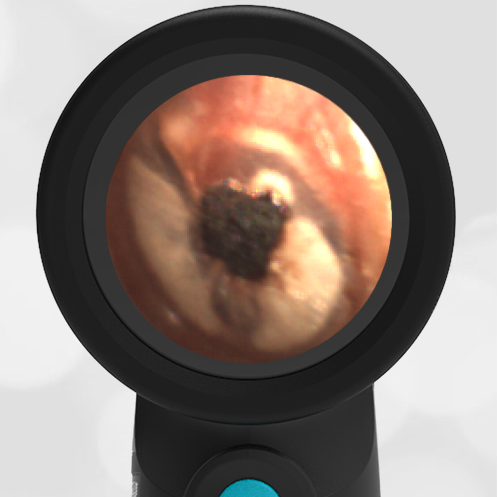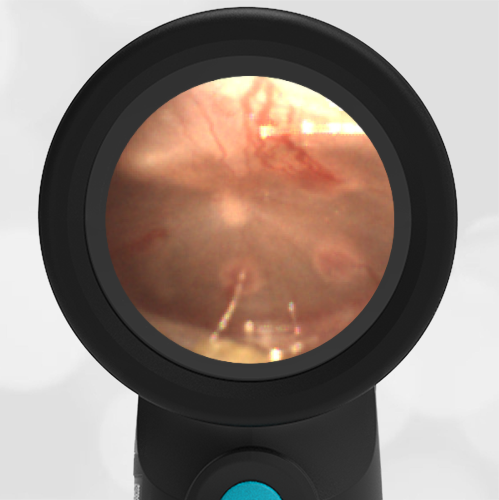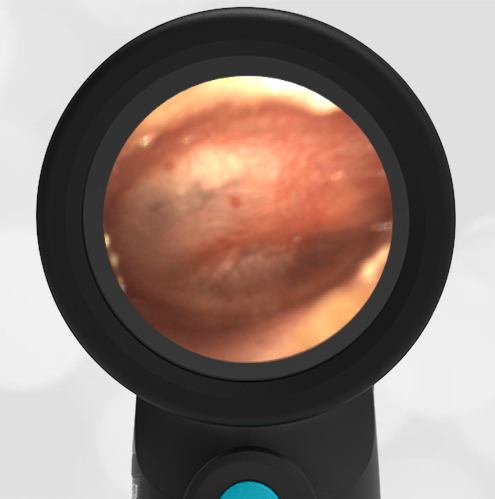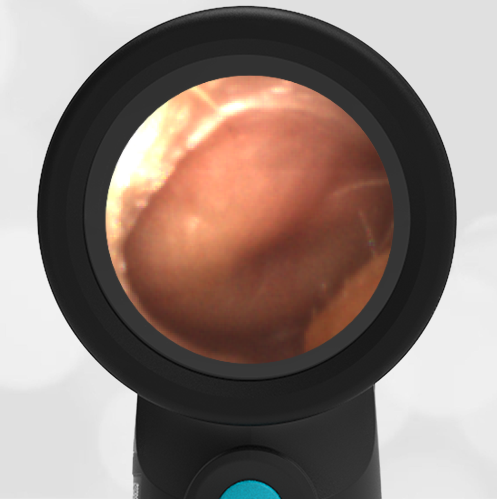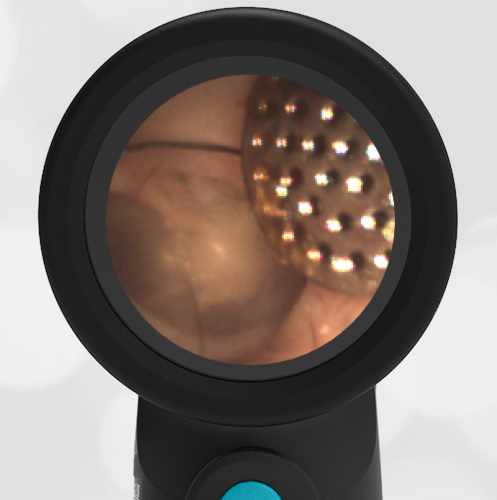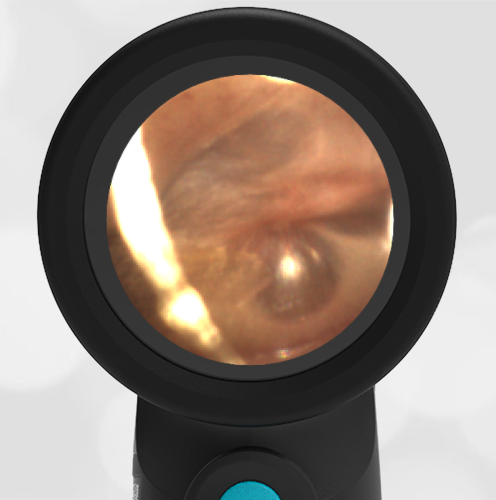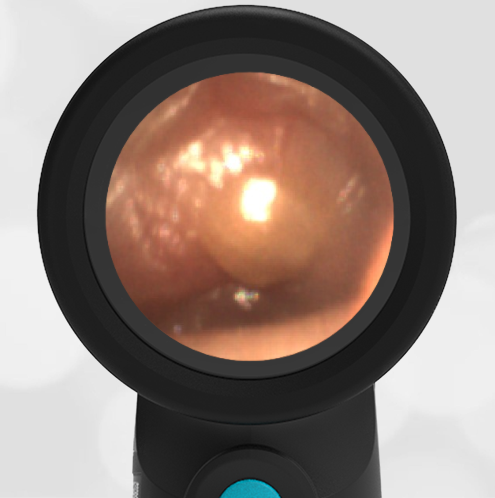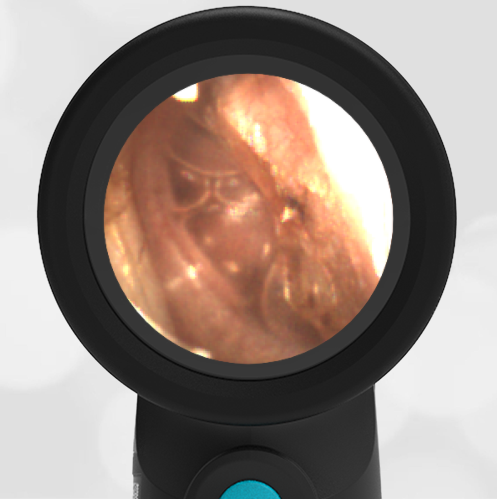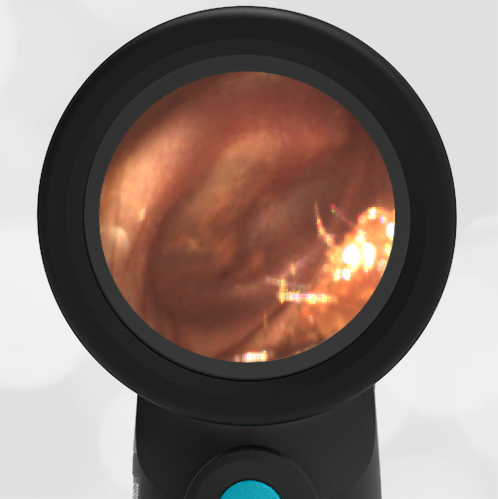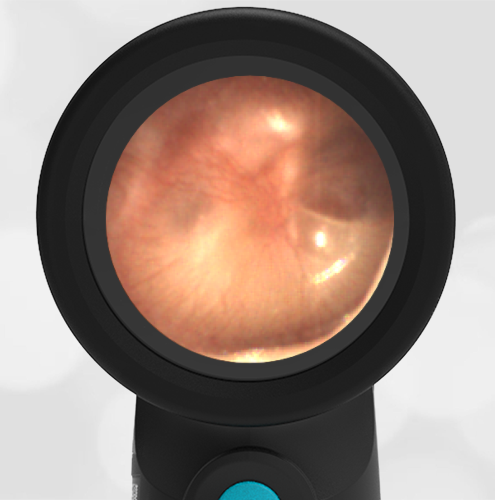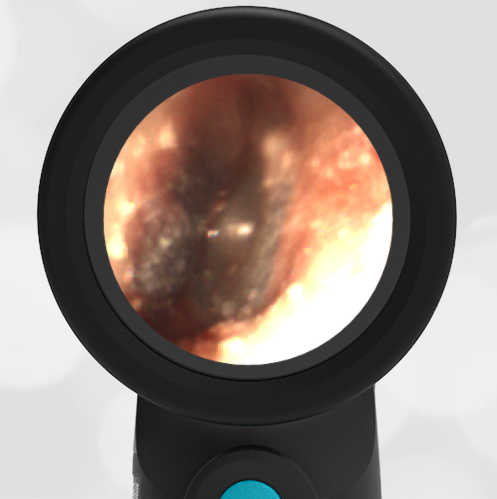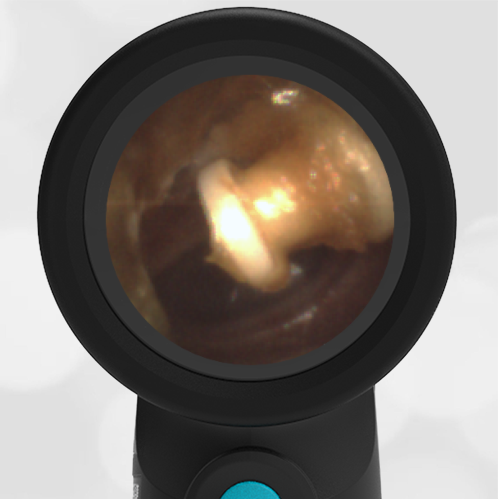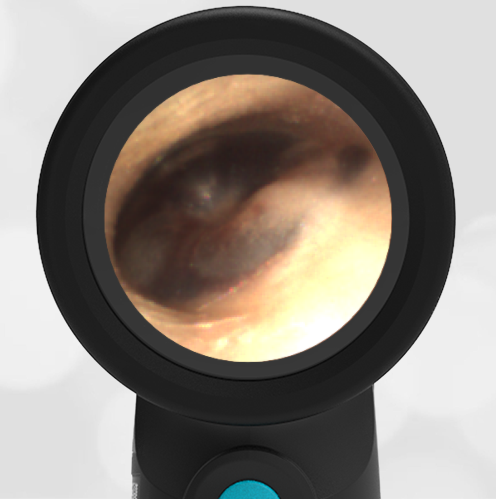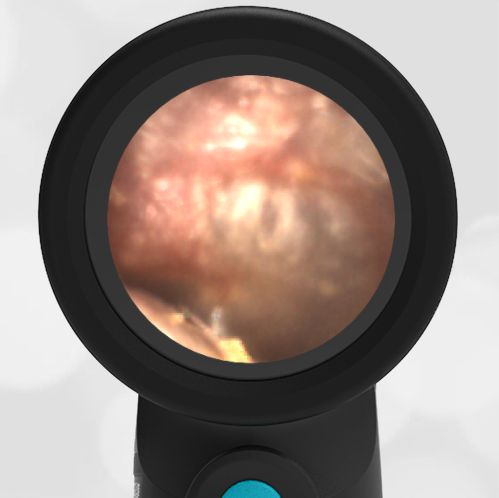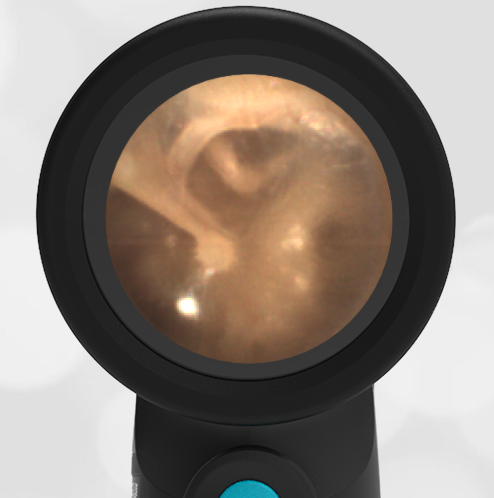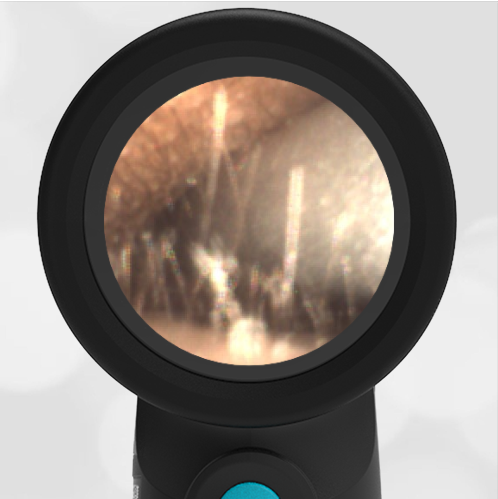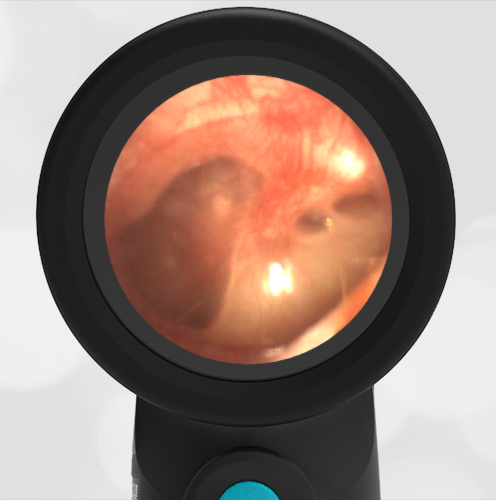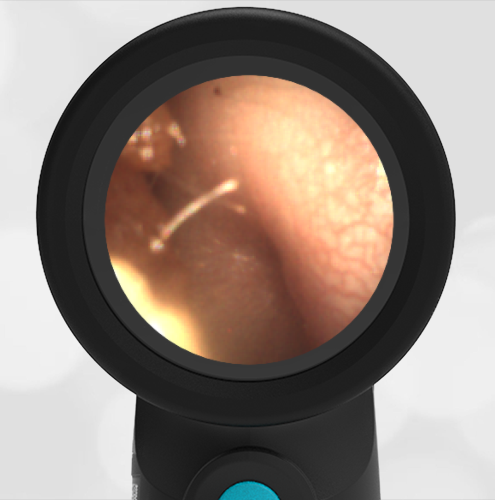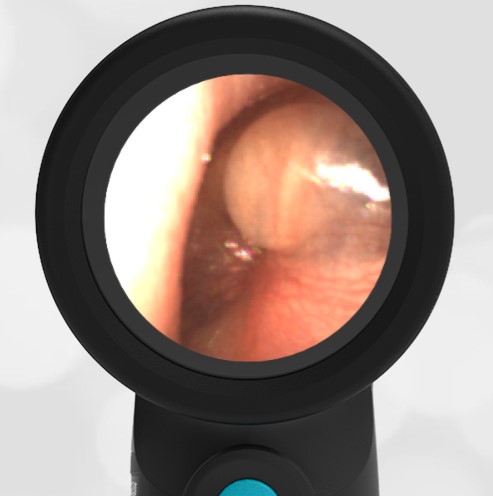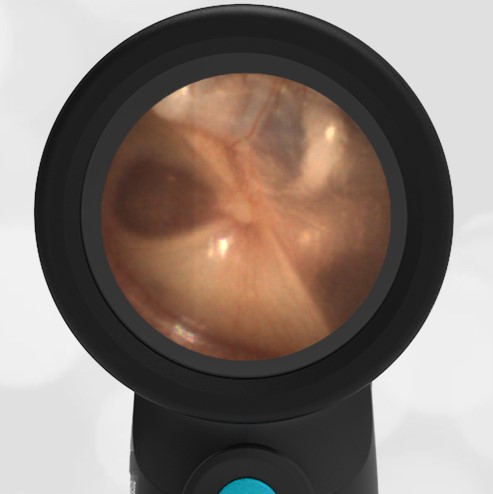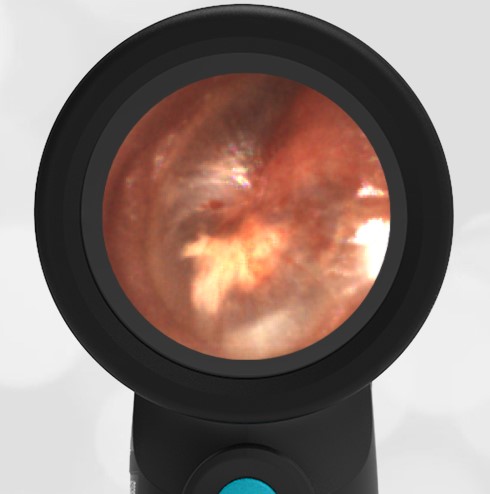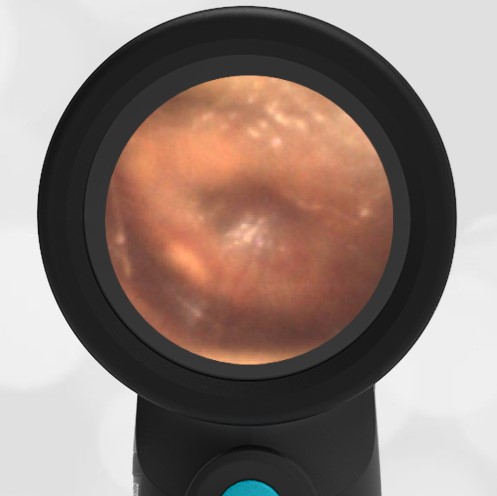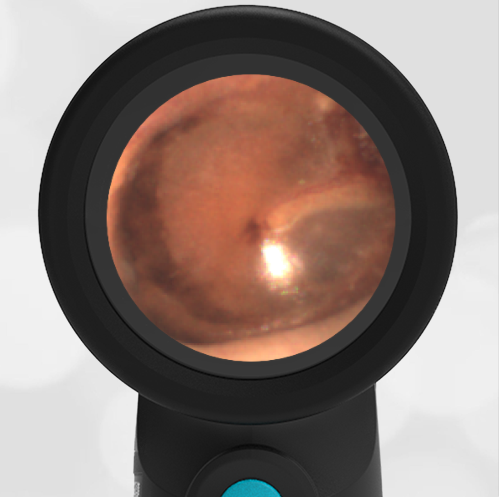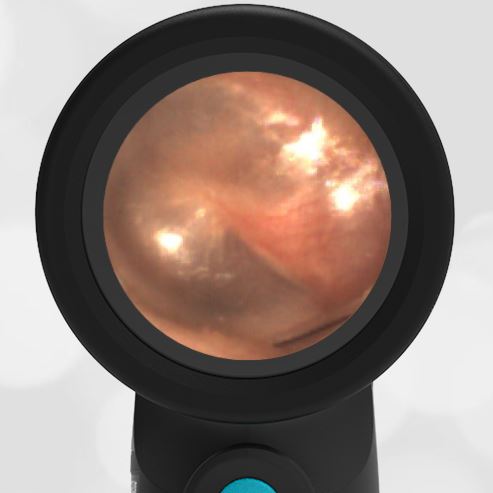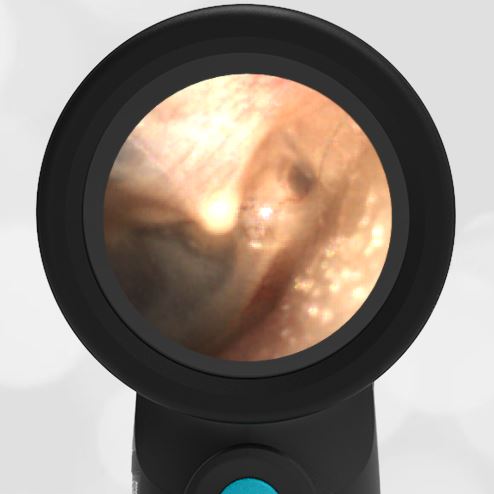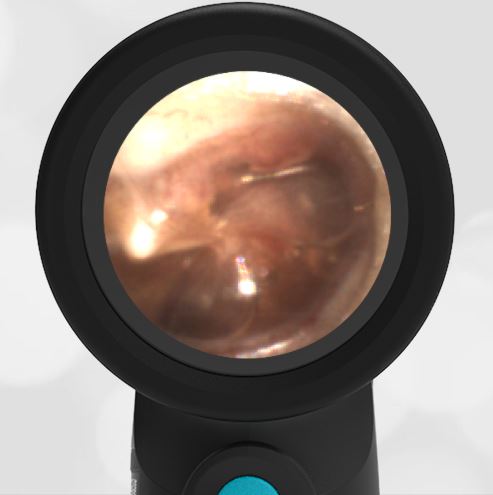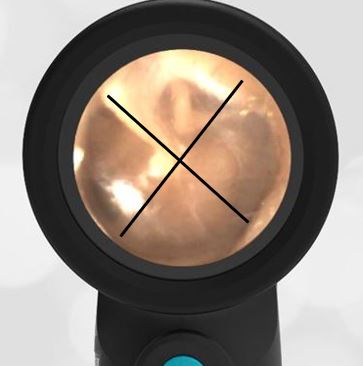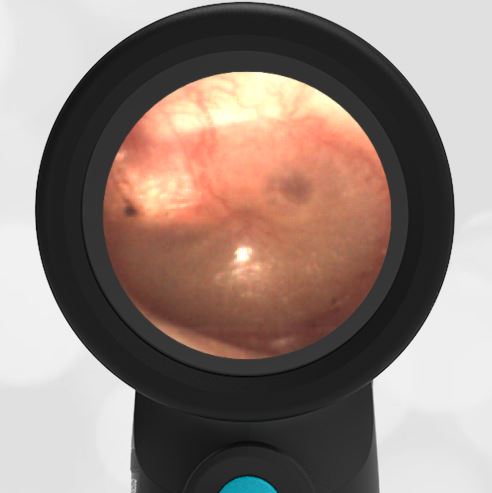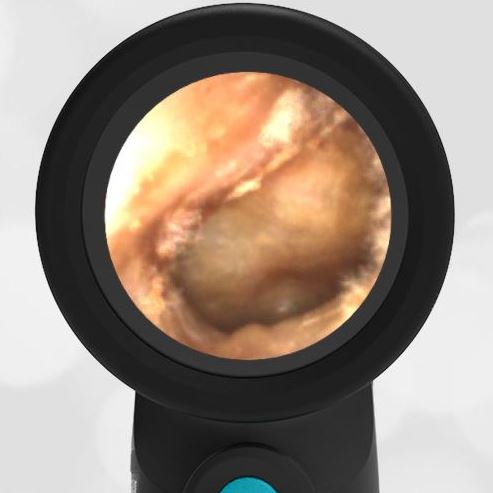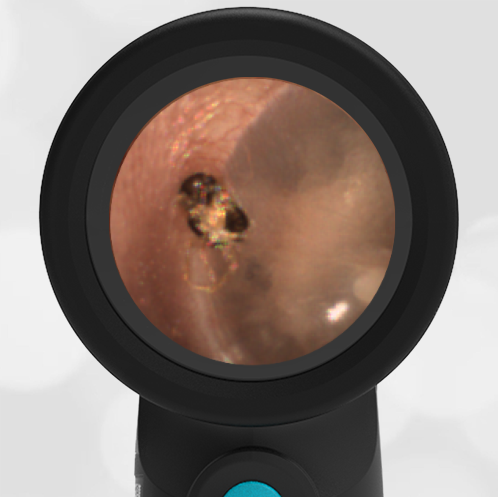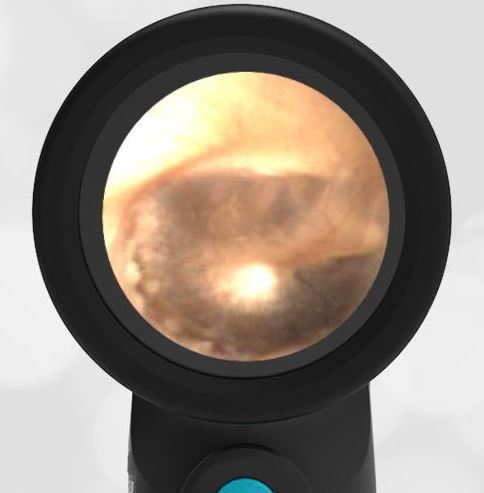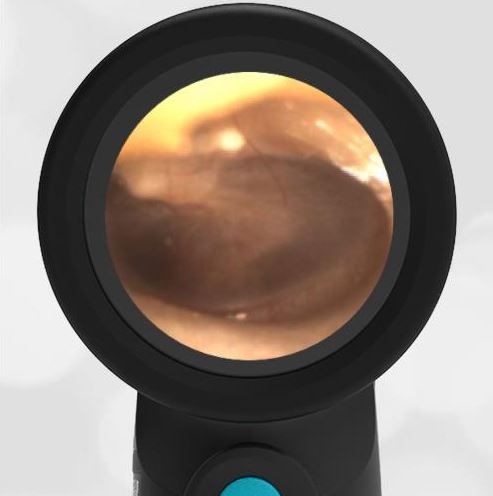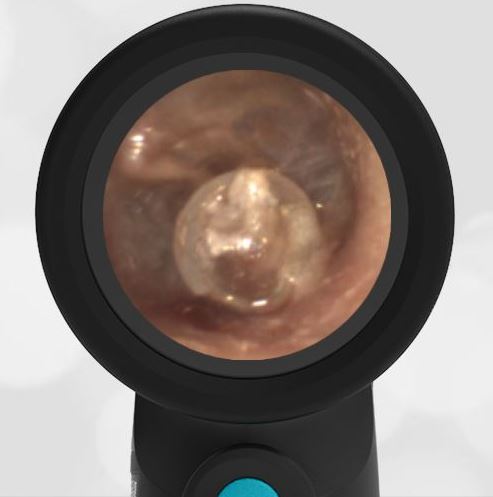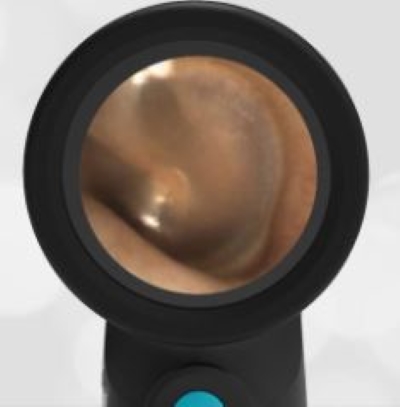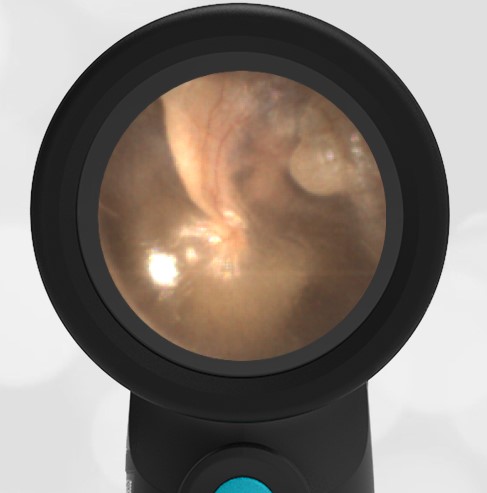
Cholesteatoma – April 20, 2023
A healthy 24-year-old female presents to the internal medicine clinic for a routine checkup. She has no specific concerns about this visit. She has no hearing complaints. She has no history of ear infections or ear trauma. The following image of her ear is obtained.
What is true about this image obtained with the Wispr digital otoscope?
- This is a congenital finding of no significance.
- She likely has a history that includes cold water activities such as surfing.
- She requires an otolaryngology (ENT) evaluation.
- This is bullous myringitis.
Answer 3. She requires an otolaryngology (ENT) evaluation.

The patient has an anomaly in the posterior-superior area of her tympanic membrane (TM). This anomaly appears to be deep in the TM. The classic lesion occurring deep in the TM is the cholesteatoma. A cholesteatoma is an overgrowth of cells behind the tympanic membrane that can erode the ossicles (bones) of the middle ear and cause hearing loss. Note how close this lesion is to the incus and stapes bones and the chorda tympani nerve. Because of the possibility of destruction to these structures, otolaryngology (ENT) should be consulted. Cholesteatomas may be either congenital or acquired. While this patient’s lesion has had the appearance of a possible cholesteatoma, its location is atypical. Congenital cholesteatomas are typically in the anterior-superior quadrant. Cold water activities such as surfing are associated with exostosis which is a benign bony outgrowth of the ear canal. Bullous myringitis is an infection of the middle ear space (acute otitis media), whose hallmark includes blistering of the TM.
WiscMed has created a visual diagnosis guide that can be found here.

